Some people say Samba originated in Bahia, while others believe that the genre as we know it today was created in Rio de Janeiro. Regardless, it’s undeniable that Rio has become the heart of this Brazilian musical genre.
The city has established itself as the primary destination for Samba enthusiasts and has earned the prestigious title of ‘Samba World Capital,’ highlighting its immense cultural significance.
Below, we present a brief history of Samba, which celebrated its 100th anniversary in 2016, and a guide on how to enjoy the best samba shows in town. This vibrant genre fills the city with energy not only during Carnival but throughout the year, every day of the week.
How was the Samba Carioca born?
In the mid-nineteenth century, a significant cultural and historical event took place in the port district of Rio de Janeiro, specifically between the neighborhoods of Saúde and Gamboa.
This area, once a hub for the enslaved Africans brought by the Portuguese, began to develop a rich and diverse cultural landscape after the end of the slave trade. The formerly enslaved communities established humble homes and created the first samba gatherings, leading to the emergence of a vibrant cultural space known as “Little Africa.”
Because these communities were marginalized and forbidden to express their art or culture publicly, they sought refuge in the homes of the “Tias Baianas” (Aunts from Bahia). These women, who came from Bahia, made their living by selling food and sewing services. They celebrated their religions (Candomblé and later Umbanda) in their homes and shared their cultural traditions. It was in these gatherings that the first samba circles formed, inspired by Maxixe and other African rhythms.
A pivotal moment occurred in 1916 at one of these gatherings in Tia Ciata’s home, the most famous and important “aunt from Bahia.” There, the musician Ernesto dos Santos, better known as Donga, collaborated with other musicians to compose the song “Pelo Telefone.” This song was recorded as the first samba in Brazil, marking a significant milestone in the history of Samba Carioca.
The first Samba School
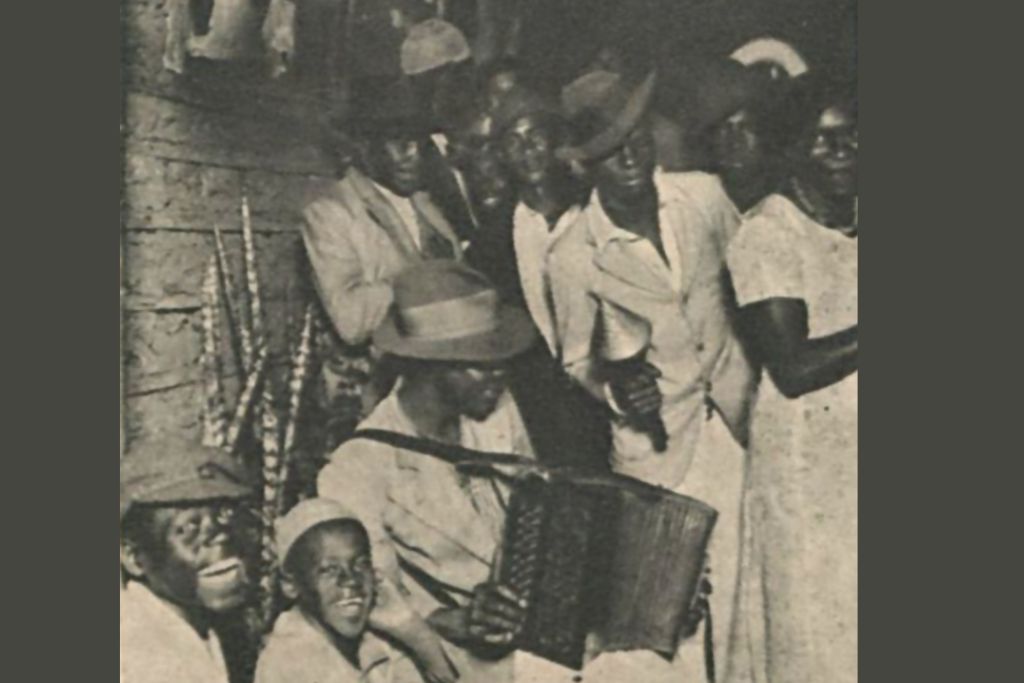
At the end of the 1920s, samba Carioca entered a new phase. In the Estácio neighborhood near Praça Onze (Onze Square), a fresh generation of artists emerged, including Ismael Silva, Bide, Nilton Bastos, and others who transformed the composition and performance of samba. They introduced new instruments like the surdo and tambourine, and they modified the rhythm, making it faster with a strong drumbeat. In 1928, they also established a landmark in the history of samba Carioca, Brazil’s first samba school, “Deixa Falar.”
Initially, the Samba Schools held their parades at Praça Onze, later moving to the Marquês de Sapucaí Sambadrome, where the events continue to this day. The Samba Schools Parade takes place over five consecutive days during the Carnival holiday, and the Guinness Book of Records recognizes it as the largest Carnival in the world.
Read more: Carnaval in Rio de Janeiro: How to Watch the Samba Schools Parade in Sambadrome
The 'Rodas de Samba' (Samba Circles)
Nevertheless, Samba is alive and all over Rio de Janeiro, extending far beyond the Marquês de Sapucaí.
The gatherings or performances of Samba are commonly referred to as “roda de samba,” which translates to “samba circle.”
In these circles, musicians sit around a table, playing instruments and singing while the audience gathers around them (making a circle), participating by singing, clapping, and dancing along to the rhythm.
Renowned samba singer Luiz Carlos da Vila once remarked, “The greatest invention by man after the wheel was the Samba wheel (circle).” And we wholeheartedly agree!
A Guide for enjoying Samba in Rio - where to find the best Samba shows from Monday to Sunday
One of the most compelling proofs of samba’s status as Rio’s most significant cultural expression is the fact that you can easily find a top-notch samba show every day of the week, no matter where you are in the city.
As the traditional samba singer Zé Keti expressed in the song “A Voz do Morro,”: “I am samba, born in Rio de Janeiro; I bring joy to millions of Brazilian hearts.”
–> Listen to this and other samba songs in our p Samba Carioca.
The joy of samba is not just a local phenomenon; it’s a universal language that infects the hearts of Brazilians, Cariocas, and the thousands of tourists who visit the city.
As such, we prepared a guide with the best local samba shows you need to know. We encourage you to visit these circles and experience the joy of samba firsthand.
Mondays
Who says Monday isn’t a great day to enjoy samba? Every Monday, the city’s two main and most traditional samba circles take place: the Samba do Trabalhador and the Roda de Samba da Pedra do Sal.
TheSamba do Trabalhador (Worker’s Samba) is held at the Clube Renascença in the Andaraí neighborhood every Monday at 4:30 PM, regardless of the weather. This group has received several national awards, including the Brazilian Music Award for Best Samba Group.
The Roda de Samba da Pedra do Sal (Samba Circle of Salt Stone) takes place at the base of Morro da Conceição in the Saúde neighborhood, starting at 6 PM. This location is named for its historical significance, as it was where enslaved people once unloaded salt from Europe into the city. Due to its historical importance, the area has been declared a historical and religious monument of Rio de Janeiro. (Note: The samba does not happen when it rains.)

Carioca Tip:
Take the opportunity to learn about the history of the region known as Little Africa and behind the scenes of carnival with our History of Samba and Carnival Experience tour, and combine with the Pedra do Sal samba circle.
* Samba do Trabalhador: Every Monday from 4:30 pm. Admission: R$ 30,00. Address: Renascença Clube – Rua Barão de São Francisco, 54, Andaraí.
* Samba da Pedra do Sal: Every Monday (When it`s not raining) from 6 pm. Admission: Free. Address: Rua Argemiro Bulcão – Largo João da Baiana, Saúde.
Tuesdays
On Tuesdays, you can enjoy the best samba artists in one of the leading samba houses in the city: Beco do Rato.
Established 20 years ago, the traditional samba venue is located in the bohemian district of Lapa. It boasts a diverse program held every day of the week, featuring established and new talents of Carioca samba, ensuring there’s always something new and exciting to experience.
It’s a popular spot among both locals and tourists, and a must-visit for any samba lover.
Its decoration is a respectful homage to the great names in the history of samba and its African origin. The menu, on the other hand, is a celebration of traditional Brazilian street food dishes and appetizers like pastel.
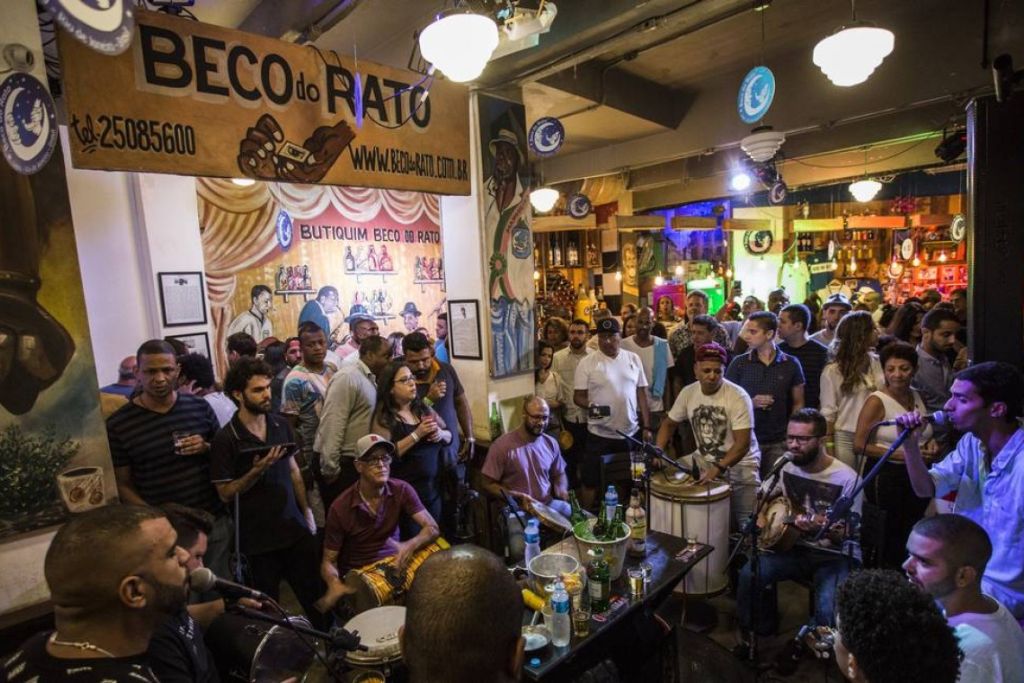

Carioca Tip:
Try the house’s traditional pastel de angu and order the cachaça Gabriela (Cachaça with honey, cloves, and cinnamon) to go with it.
* Beco do Rato: Open every day (check the agenda at their website). Admission: From R$ 20,00 (May vary by event). Address: Rua Joaquim Silva 11, Lapa, Centro.
Wednesdays
Still in the Bohemian region of Lapa, two bars stand out on Wednesdays: Carioca da Gema and Bar Vaca Atolada.
Carioca da Gema bar is considered one of the most traditional houses in the bohemian neighborhood. Its programming always includes concerts by big names in the genre, with competitive admission due to the size of the old mansion that was converted into a bar.
On the other hand, Vaca Atolada, is a bar that resonates with the Cariocas. Its traditional samba circle on Wednesday is a testament to its deep-rooted magnetism and connection to the community.
* Carioca da Gema: – Open from Tuesday to Saturday. (Check their website). Admission: from R$ 30,00 (May vary according to the event).
Address: Av. Mem de Sá, 79 – Lapa, Centro.
* Vaca Atolada: – Open from Tuesday to Saturday. (Check their website). Admission: free
Address: Av Gomes Freire, 533, Lapa, Centro.
Thursdays
Every Thursday evening, Bar do Omar, located at the top of the scenic Morro do Pinto in the port region of the city, hosts a lively samba circle. The festivities begin at 7:13 PM, making the bar a perfect spot for those who enjoy cold beer, delicious food, and refreshing drinks. Be sure to try their bolinhos and their homemade passion fruit batida. As you raise your glass, you’ll be treated to one of the city’s most stunning views of the port area.
If you’re looking for a more trendy and upbeat atmosphere, check out Samba Independente dos Bons Costumes, the group that performs every Thursday at the Centro Cultural Fundição Progresso, located behind the arches of Lapa. This ensemble consists of Brazilian and international musicians, including an Argentinian. While they explore various Brazilian musical genres, samba remains their central focus. Between performances, a DJ keeps the energy high, playing tracks that entice the youthful audience to dance.
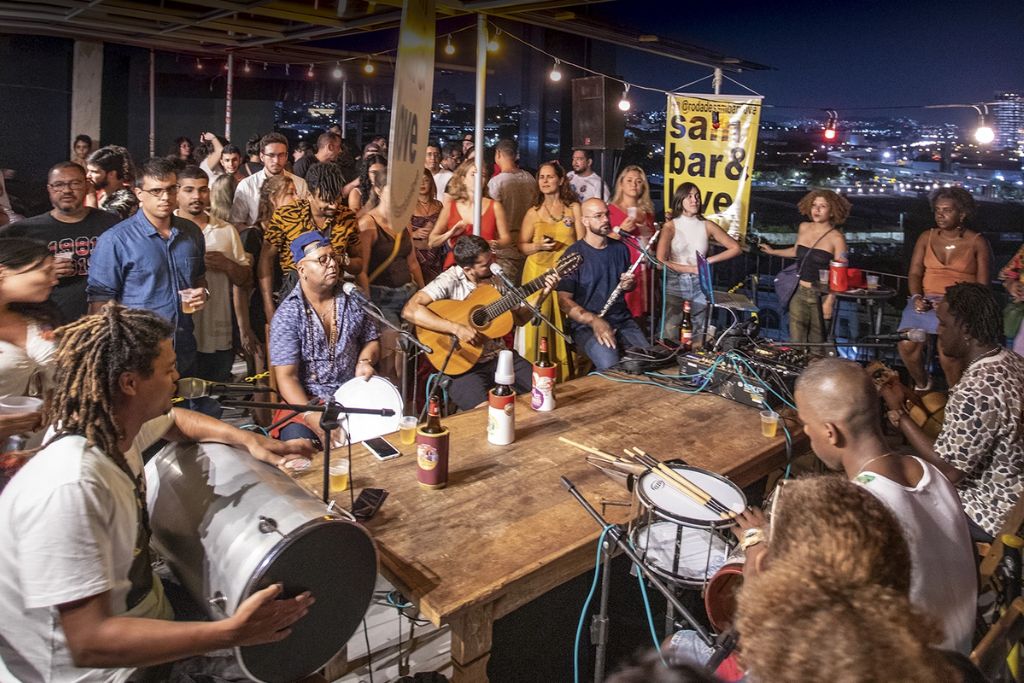
* Bar do Omar: open from Thursday to Sunday, from 5pm. Admission: Free. Address: Rua Sara, 114, Santo Cristo.
* SIBC – Samba independente dos bons costumes: every Thursday from 9 pm. Admission: from R$ 30,00. Address: Fundição Progresso Cultural Center, Espaço Annex – Rua dos Arcos, 24 – Lapa.
Fridays
In the port region of Rio, the Trapiche Gamboa house offers an excellent combination of samba circles like the ones from the old terreiros and good snacks typical of the national cuisine.
The 19th-century townhouse has a large hall and high ceilings, which houses a mezzanine and a third-floor balcony with a bar. The relaxed and sophisticated environment established the place as one of the most pleasant samba houses in the city.
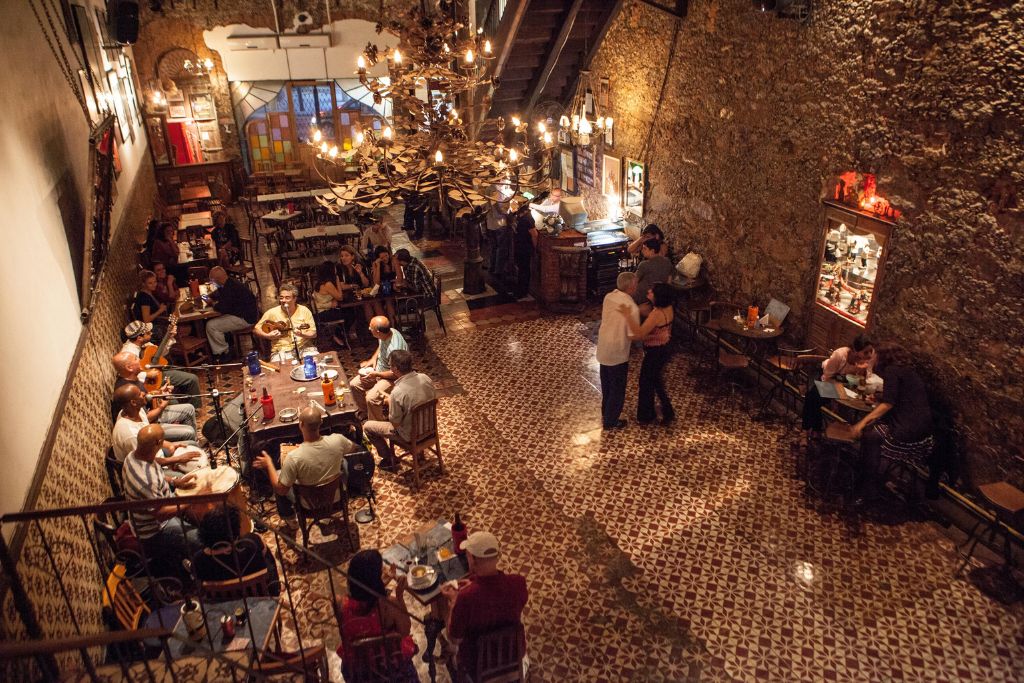
* Trapiche Gamboa: Open from Tuesday to Saturday (Check website). Admission: R$ 20,00 (May vary according to the event).
Address: Rua Sacadura Cabral, 155 – Saúde.
Saturday
There is a famous duo in Rio, and it traditionally happens on Saturdays: Feijoada + samba.
Feijoada is the national dish of Brazil and one of the 10 must-see attractions in Rio.
If you want to try the traditional dish and, of course, visit a Carioca samba school, the tip is to go to the feijoada at one of the samba schools in Rio de Janeiro. Several schools have the traditional school feijoada all year round in their schedule of events.
For example, the samba school G.R.E.S. Portela, the greatest champion of the Carioca Carnival, makes its traditional feijoada every first Saturday of the month from 1pm. In addition to enjoying the dish, you will also be able to check out the battery rehearsal and fall into the samba with your dancers.
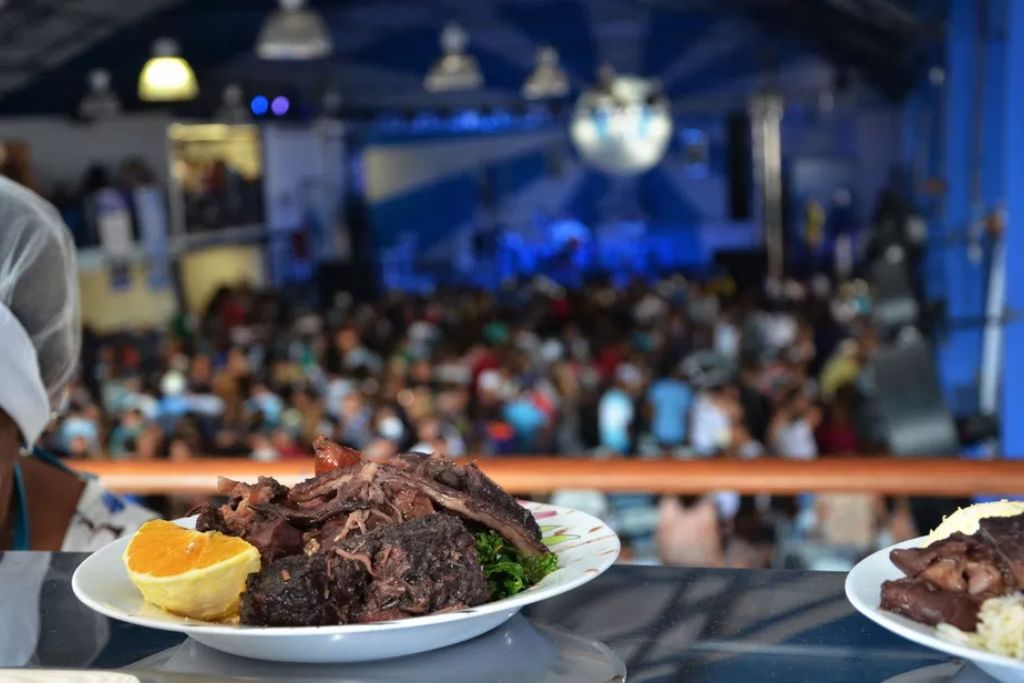
* Quadra do G.R.E.S.Portela: Admission: R$ 40,00 with feijoada included. Address: Rua Clara Nunes, 81 – Madureira.
Another option is Samba dos Guimarães, a samba in the famous bohemian neighborhood of Santa Teresa.
With a young audience and a relaxed atmosphere, different groups lead the circles every Saturday from 7 pm at the Casarão da Federation, also known as the Flea Market.

Carioca Tip:
It’s worth taking advantage of Saturday to stroll through the neighborhood’s streets during the day with our tour Lapa and Santa Teresa Walking Tour and end the night enjoying samba at the market in Largo dos Guimarães.
* Samba dos Guimarães: Every Saturday, according to the schedule published on the local social networks. Admission: from R$ 25,00 (May vary according to the event). Address: Rua Almirante Alexandrino 501 – Largo dos Guimarães, Santa Teresa.
Sunday
On Sundays, Bip-Bip, considered a traditional bohemian stronghold in Copacabana, has samba circles starting at 8pm.
The circles tend to be crowded due to the space in the bar. The few tables and chairs are reserved for musicians, and there are no waiters serving – customers help themselves directly from the bar fridge.
To avoid interfering with the musicians and not making noise for neighbors, talking and clapping during the music is prohibited. Instead, regulars often snap their fingers. And even so, the bar has a captive clientele that will admire good roots music for over 50 years.
* Bar Bip-Bip: Samba on Thursdays and Sundays. Admission: Free.
Address: R. Alm. Gonçalves, 50 – Loja D – Copacabana.
Now that you’ve discovered where the locals find the best samba shows in Rio de Janeiro, why wait to immerse yourself in samba, the most vibrant Carioca rhythm in Brazil?
Experience the best of Rio’s samba circles with a knowledgeable and friendly local tour guide. Book our tour, the Local Samba Circle and Botequim Experience, for an authentic Carioca experience.
Loved our guide to enjoy the best samba shows in Rio de Janeiro?
Imagine having a custom itinerary tailored just for you, including these and other hidden gems known only to the locals. Click on this link and request your personalized adventure today!
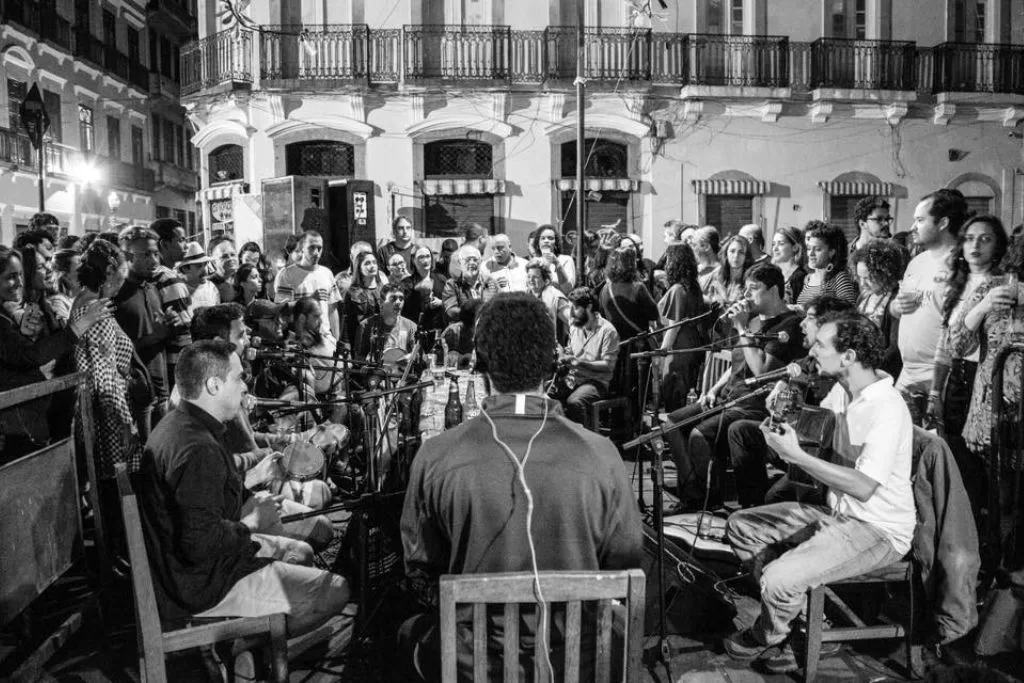
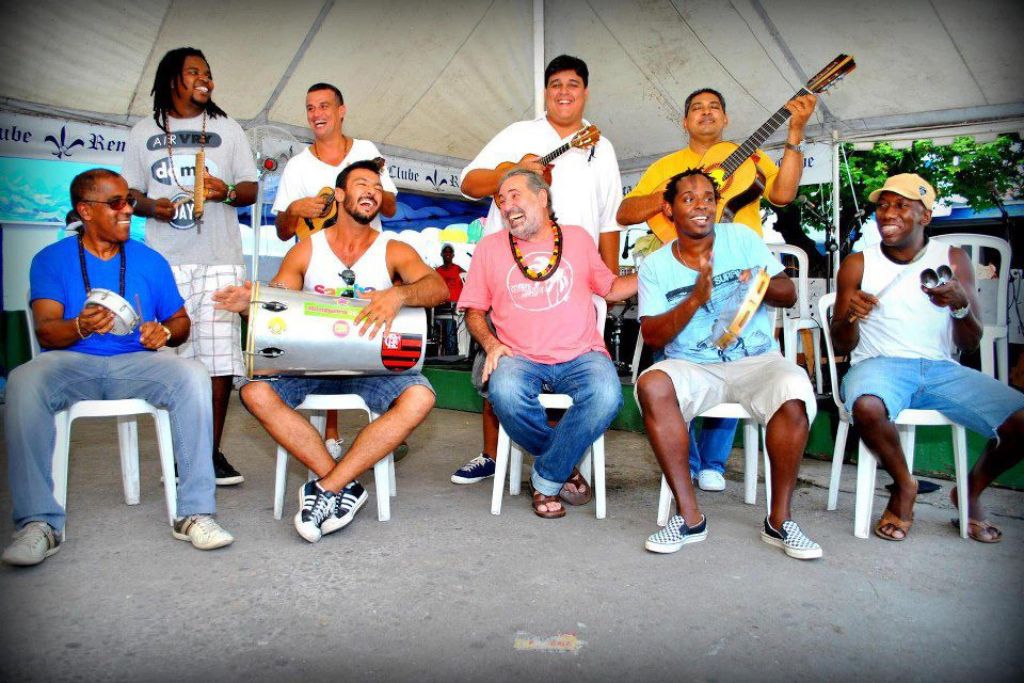

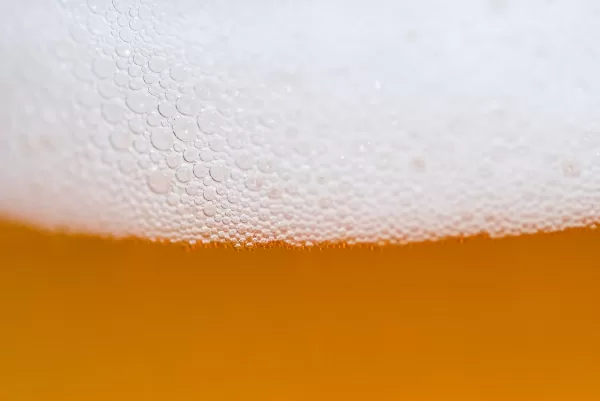
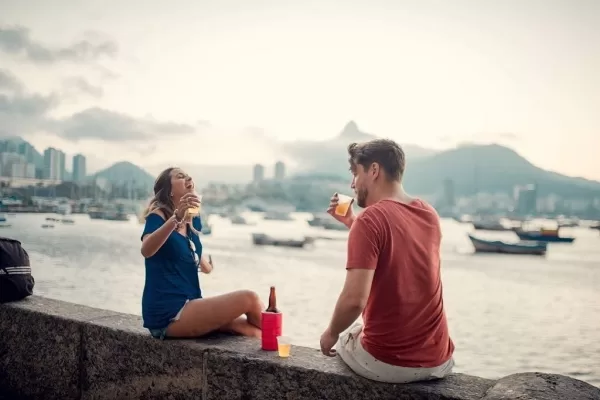

Pingback: 17 cosas gratis (o casi gratis) para hacer en Río de Janeiro, Brasil – Corresponsal360
Pingback: Top 10 things to see and do in Lapa | Rio de Janeiro by Cariocas
Pingback: 10 unmissable things to do in Rio de Janeiro | Rio de Janeiro by Cariocas
Pingback: Comida di Buteco: food and culture at a traditional contest 2023
Pingback: 8 must-visit museums in Rio de Janeiro | Rio de Janeiro by Cariocas
Pingback: O que fazer no Rio: Top 10 atrações | Rio de Janeiro by Cariocas
This amazing post show us exactly what we have to know about this beautiful and fantastic musical genre. Well written and very important to all of us. Congratulations, riobycariocas.🏆😘
Thank you Rodrigo! We are glad you enjoyed! 🙂